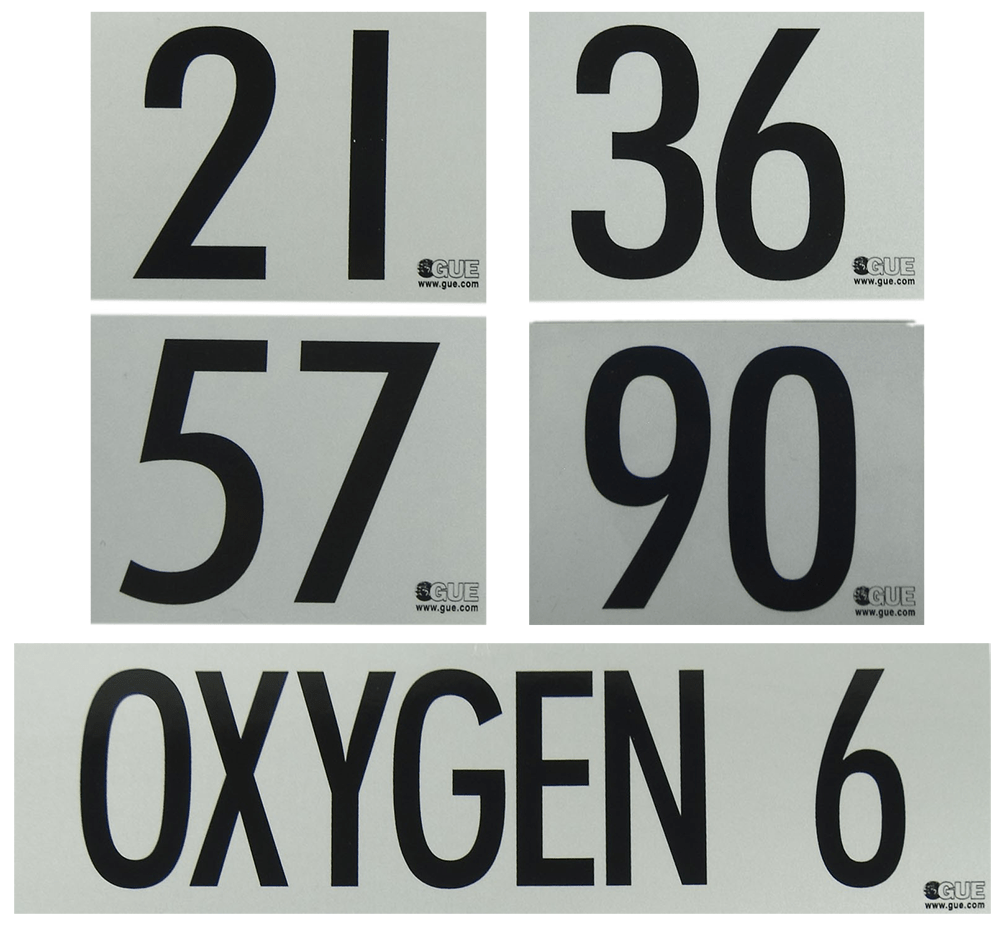Investing in your own scuba tank is a marked step in your diving career: no longer can you be considered anything less than serious. The type of tank you will want is highly dependent on the type of diving you will use it for. Steel or aluminium? A DIN or Yoke valve? 12 or 15 litres? These are all important questions to consider when selecting a tank. Hopefully, with the help of our buyer’s advice guide, these considerations will be made clearer. Alternatively, if you’re already savvy on scuba tanks, you can go straight to our product recommendations to find out which is best scuba diving tank for you.
Best Scuba Tanks Reviewed
#1 – Luxfer Aluminium 80 cf (11.1 Litre)
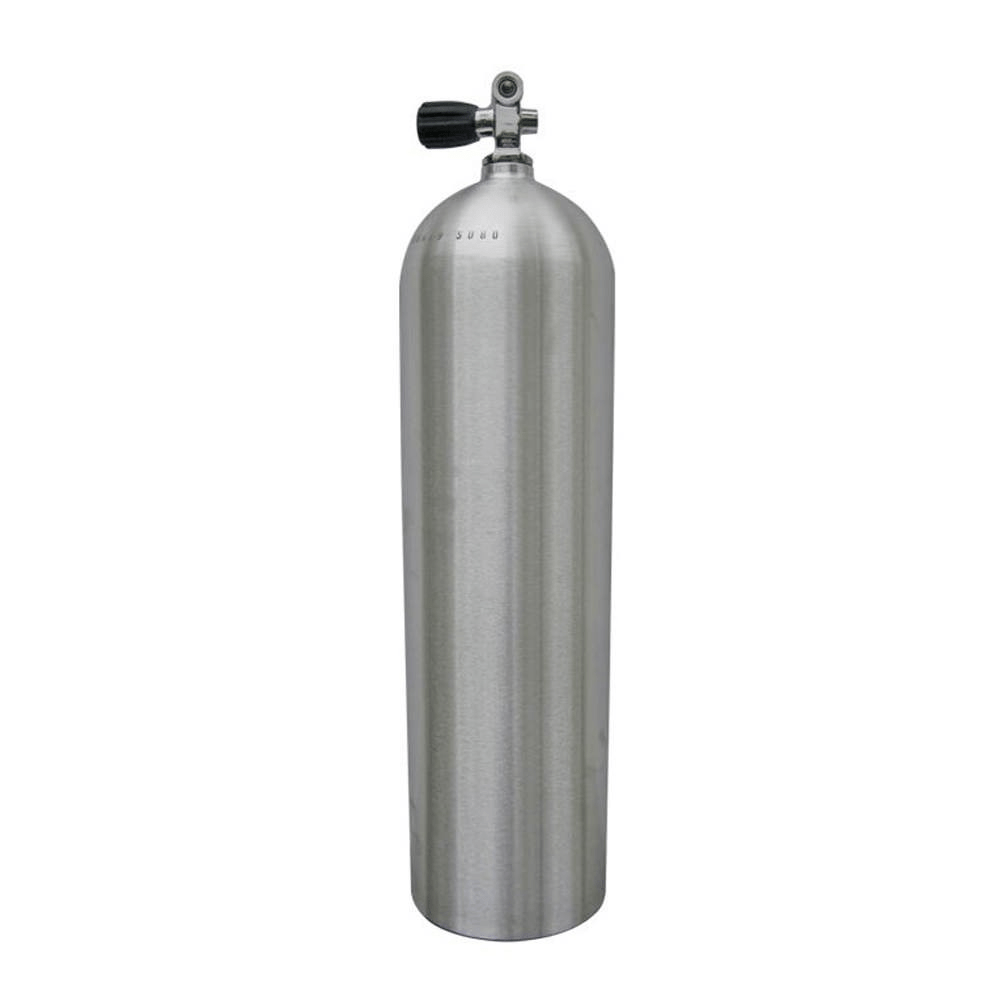
The Luxfer Aluminium 80 cf is the standard tank of the diving community. This tank is great for all divers, from backmount, to sidemount to twinset divers. This tank is preferable for wetsuit divers, due to its increased buoyancy. The Alu 80 (as it’s often referred to) is also the go-to choice for stage tanks.
Features
- Working pressure: 232 bar.
- Weight: 14.3 kg.
#2 – Faber Steel 15 Litre
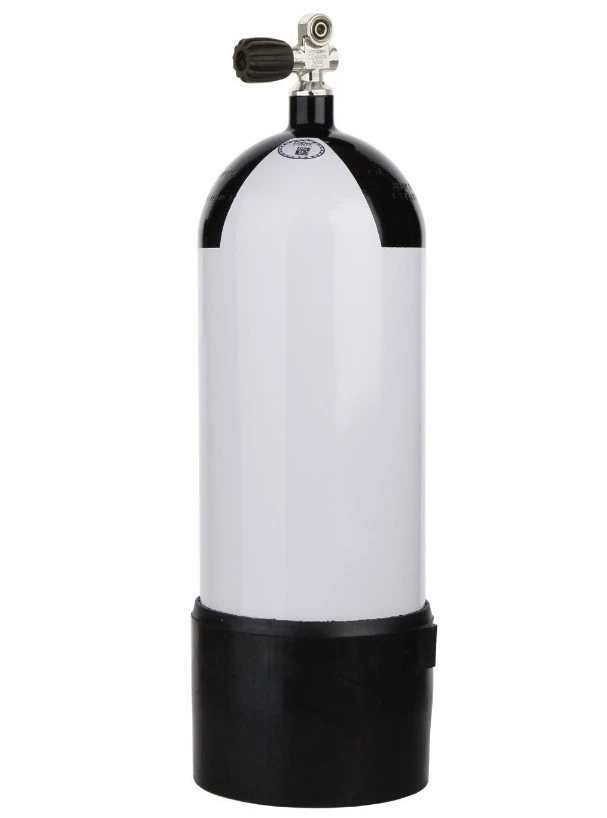
The Faber 15 Litre is the perfect tank for recreational divers with a high air consumption and/or looking to do longer/deeper dives (within recreational limits). This tank is especially good for nitrox divers, for whom gas capacity is often the limiting factor of their dives. That said, however, this tank should be avoided by those with smaller builds due to its increased weight and size.
Features
- Working pressure: 232 bar.
- Weight: 18kg.
#3 – Faber Steel 10 Litre
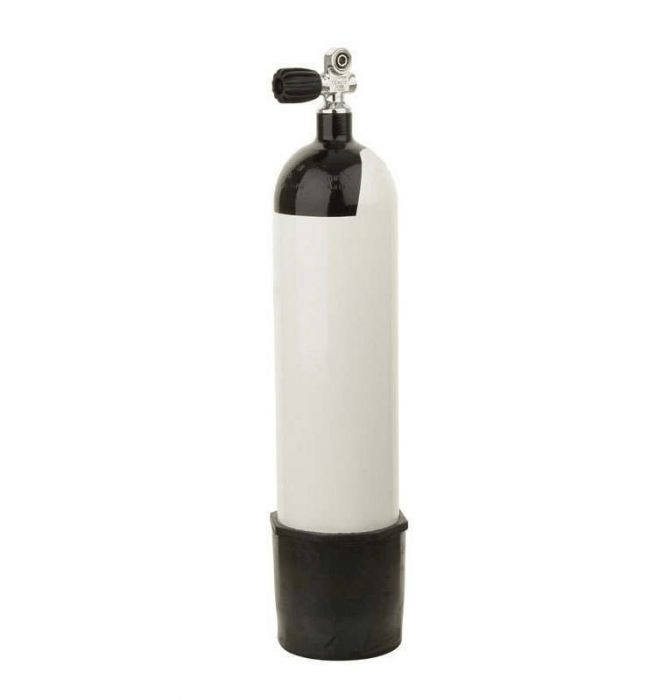
The Faber 10 Litre makes for the perfect tank for children, as well as those with good air consumption, performing only shallow dives (<12 metres). It is slender and lighter than the larger capacity tanks, making for a very comfortable diving experience (specifically outside of the water). It is also perfect for kids as it avoids the problem of inherent overweighting that comes with larger capacity steel tanks. That said, however, this tank should not be used for dives deeper than 12 metres due to its lower capacity.
Features
- Working pressure: 232 bar.
- Weight: 11.2 kg.
#4 – Faber Steel 3 Litre
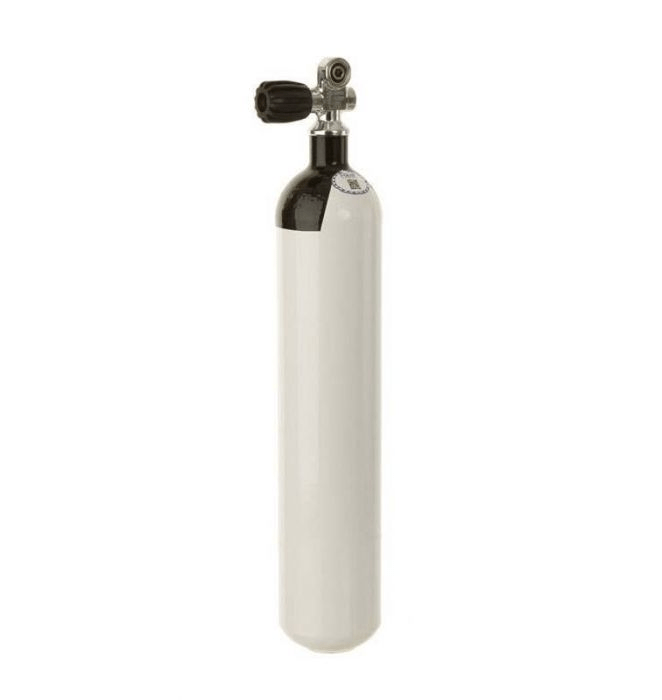
The Faber 3 Litre Steel is perfect for those wanting a pony tank. Its small, compact build makes it ideal for clamping to a primary tank, or slinging to one’s side as a stage tank.
Features
- Working pressure: 232 bar.
- Weight: 4 kg.
#5 – Luxfer Aluminium 40 cf (5.71 Litre)
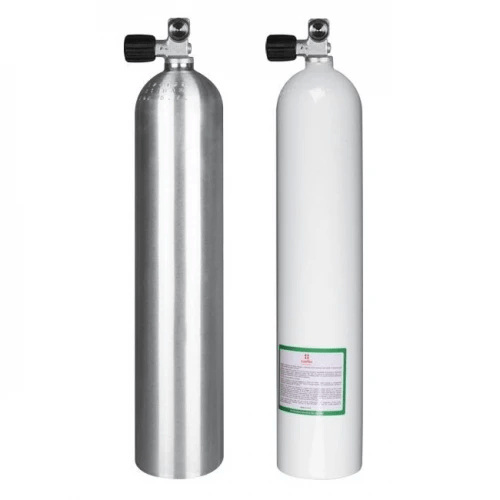
The Luxfer Aluminium 40 cf is the go-to choice for oxygen decompression bottles, as well as for Nitrox decompression gases on entry-level technical dives. It’s near neutral buoyancy, as well as having a compact size, making it perfect for technical dives. Its smaller capacity is very rarely a hindrance, as it more than suffices for all but the most extreme of dives (when oxygen exposure exceeds recommended OTU limits).
Features
- Working pressure: 232 bar.
- Weight: 8.5 kg.
Advice Guide
Steel or Aluminium?
Scuba tanks are available in two different metals: steel or aluminium. Steel tanks are negatively buoyant, regardless of whether they are empty or full. This means that their buoyancy characteristics remain the same throughout the whole dive. Conversely, aluminium tanks are negatively buoyant when full, but become positively buoyant gradually as the gas pressure decreases. These differences in buoyancy characteristics come with benefits and drawbacks, depending on the type of diving you will be engaged in.
As a diver, you want to ensure that you are correctly weighted. What does this mean? A diver who is correctly weighted is one who can hold the end of dive safety stop depth comfortably with a tank at end pressure (50 bar), with a completely empty BCD, whilst breathing normally. If a diver is over-weighted, they will have to add air to their BCD in order to maintain this depth.
Equally, if a diver is underweighted, they will have to take shallow breaths and consciously fin downwards in order to maintain this depth. Being correctly weighted is essential for both comfort and safety. It enables you to hold stop depths, and gives you a fighting chance in the event of a total BCD failure at depth. Therefore, as aluminium and steel will affect the weight of your equipment system in different ways, you need to consider which is best for you.
Single Tank Backmount Diving
For single tank backmount diving, steel is usually the preferred choice. Its increased in-water weight means that you don’t need to carry as much extra lead. As an example, when diving with a single steel tank, I require 2kg of lead; when diving with aluminium, I require at least 8kg. This added weight increases the weight of your equipment out of the water, potentially making entries and exits a pain. Similarly, a standard 12 Litre steel tank tends also to be stumpier than its 11.1 L aluminium counter-part, making it more compact and manageable for divers of a smaller build. That said, however, there is one instance in which an aluminium tank would be preferable to steel for single tank backmount diving. If you are a diver with a very low body mass and/or height, then aluminium may be the better choice. The way to determine if this applies to you is simply to perform the end of dive weight check as described previously, ideally in a steel tank. If at the safety stop depth, with an empty BCD, a steel tank at 50 bar, and no additional weight, you cannot hold the depth and have to stop yourself from sinking, this means that a steel tank is unsuitable for you, i.e. you are over-weighted. In this case, an aluminium tank is your best bet to ensure safe and comfortable diving.
Sidemount Divers
For sidemount divers, the same applies. Although aluminium tanks may seem more popular with sidemount divers, this is not always the case. In many instances, steel is preferable. As a rule of thumb, if you are having to carry in excess of 6kg of additional weight when diving with aluminium tanks, then you should switch to steel. For example, if you dive with aluminium tanks and carry an additional 4kg of weight, changing to steel – whilst still potentially beneficial – will make less of an impact, as the amount of additional weight currently carried is relatively small.
Similarly, for divers with low body mass and/or height, or with thin exposure protection (e.g. 3-5mm wetsuit), aluminium makes for the better choice. However, if you are diving with aluminium tanks and carry 8-10kg of additional weight, switching to steel will be hugely beneficial as it will significantly reduce this excess burden as well as increase your spinal mobility underwater. One of the other considerations for sidemount is trim and maneuverability.
Aluminium tanks do tend to be more maneuverable and sit in better trim than steel, hence why the Aluminium 80cf tends to be the favourite of wetsuit sidemount divers. However, as already said, this is only preferable if you are carrying 6kg or less when diving with aluminium, otherwise the steel will be far more beneficial to your equipment configuration.
If you are buying a tank to be used as a stage or decompression bottle, then you should always go for aluminium. The reason for this is that a steel stage bottle, when combined with the rest of your tanks, will almost certainly overweight you. If you then add additional steel stage bottles for deeper and/or longer dives, you will become severely over-weighted, putting both your safety and comfort at risk.
Similarly, as aluminium tanks are a little more maneuverable than steel, due to their buoyancy characteristics, they are preferable for stage bottle use. In any case, remember to always check the maximum lift capacity of the BCD you are using before investing in any sort of tank.
Drysuit Divers
For drysuit divers, steel tanks are again preferable. With the increased buoyancy of the drysuit, as well as that of the undergarments, steel is almost always the go-to choice, be it for sidemount, single tank backmount, or a twinset. Having said that, however, you should always perform the end of dive weight check to determine exactly what you require for yourself; those with very low body mass and/or height may still be better off with aluminium in a drysuit.
Apart from in-water buoyancy characteristics, there are some other differences between the two types of metal. Out of the water, aluminium tanks are slightly heavier than their steel counterparts (though usually by no more than 1-2kg for the same capacity). This is because aluminium is softer, and thus the walls of the tank have to be thicker to compensate for this – increasing total weight. If travelling with the tank(s) you are going to buy, this may be something to consider.
Similarly, both types of metal can suffer corrosion. In the case of steel, this can occur when moisture is introduced to the tank during filling, resulting in oxidation and internal rust. However, this can be combated with periodic tank tumbling. For both aluminium and steel tanks, pitting corrosion, line corrosion and stress corrosion can all develop. The point to make, however, is that with proper care and periodic maintenance/inspections, both types of tank will live long lives, free of corrosion. Therefore, this should not be a major part of your decision making process. Periodic visual inspections and hydrostatic testing, alongside good practices of care and ensuring that the tank remains pressurised (filled) when not in use, will guarantee longevity.
The last difference between the two is that of capacity. Steel tanks come in slightly different capacity sizes than aluminium tanks. Steel tanks are available in 3, 5, 7, 10, 12, 15 and 18 litres. Aluminium tanks are available in 1.5, 3, 5.74, 7 and 11.1 litres. Depending on your gas consumption and the type of diving you’re engaged in, these different capacities allow you to select what suits you the best.
Which Capacity?
The size of tank you use is again dependent on both you as a diver and the type of diving it will be used for.
For the majority of dives in the recreational range, a standard Aluminium 80 (11.1L) or a Steel 12L will more than suffice. If you are a recreational diver who has a noticeably higher rate of air consumption, or who is planning to perform longer and/or deeper nitrox dives, then a tank with a higher capacity is the better choice. In this case, a Steel 15L will be suitable for the job.
However, as a recreational diver, there may be instances where you actually want a smaller tank. If you have a very low rate of air consumption, and are performing dives mainly in the shallower range (up to about 12 metres), then you may be better off going for a Steel 10L. Similarly, if the tank will be used for younger children and/or very petite builds, then a 10L is often the more suitable choice (assuming that the dive will be no deeper than 12 metres).
The largest steel tank – the 18L – is uncommon. This is usually used only for advanced technical and/or cave dives. Even if you have a high rate of air consumption, it is not recommended to invest in a Steel 18L due to its weight and size. A far better option would be to either switch to a twinset or to sidemount for increased gas supply, or make a point of improving your rate of air consumption.
For those wishing to invest in a tank for a pony bottle setup, a simple steel or aluminium 3L tank will suffice. This can then be clamped to your main tank, or, as some divers prefer, slung on your side as with a stage.
If you are buying a tank to be used as a stage or decompression bottle for technical diving then you will be looking to buy an aluminium tank. For pure oxygen, an Aluminium 40 (5.74L) will do the job for all but the most extreme of dives. For all other nitrox and trimix gases, a simple Aluminium 80 is the go-to choice, due to its maneuverability and buoyancy characteristics.
Valve Types
Scuba tanks are available with either yoke or DIN valves. With the growing popularity of DIN regulators and their advantages over Yoke, it is best to invest in a DIN valve. This comes with an additional screw-in adapter so that Yoke regulators can also be used on the tank. That said, however, if you dive exclusively with Yoke regulators and/or are in an area in which Yoke valves are standard practice, then you may be better off going for a Yoke valve in order to simplify tank filling and use.
Tank Accessories
- Handles – for those who struggle with the weight of scuba tanks when lifting, a handle can make it much easier and more comfortable to grip them. This in turn can make lifting easier.
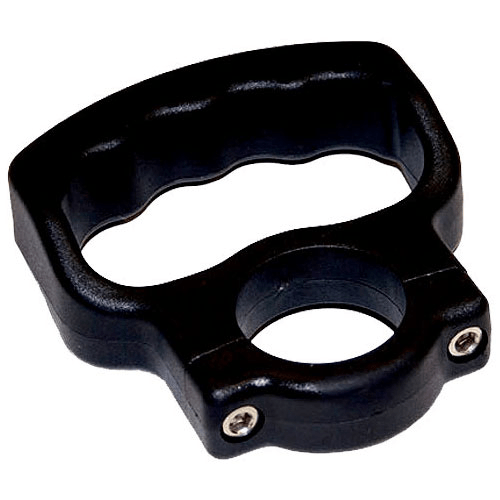
- Valve dust plug – simple plastic inserts can protect dust and other contaminants getting into the tank, just as with the dust cap on your regulator. They come in a variety of colours, allowing you to identify your tank more easily.
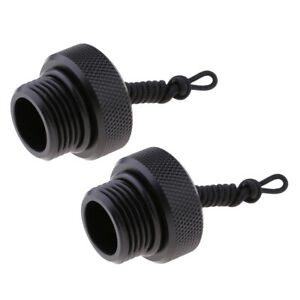
- Gas decals (stickers) – these are essential for those involved in technical diving, in which knowing the maximum operating depth of your gases is essential. You should have already been trained in their use during your technical diving course.
